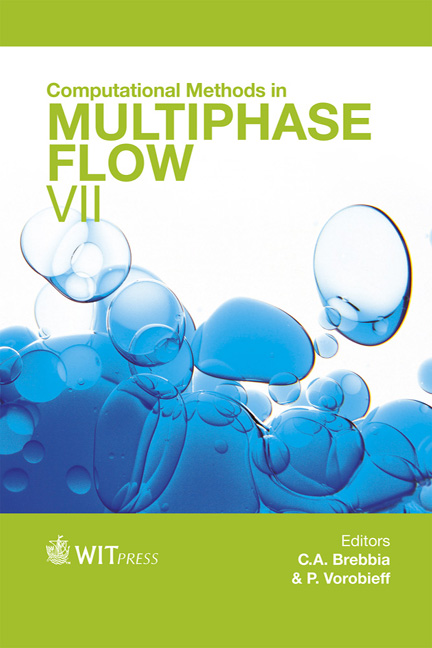Experimental Observations Of Cohesive Sediment Dynamics In Aquaculture Recirculation Tanks
Price
Free (open access)
Transaction
Volume
79
Pages
9
Page Range
475 - 483
Published
2013
Size
218 kb
Paper DOI
10.2495/MPF130391
Copyright
WIT Press
Author(s)
J. A. Garcia-Aragon, H. Salinas-Tapia, J. Moreno-Guevara & V. Diaz-Palomarez
Abstract
Cohesive sediments from non-used food and fish excreta are a main concern in aquaculture recirculation tank design. Excess concentrations of sediments can cause fish death or additional costs of energy for aeration. Flow dynamics in these tanks is represented as a multiphase flow with two disperse phases: one of solids (cohesive sediments) and one of gas (oxygen) because aeration is always needed. This research was carried out to understand the settling behavior of flocs when subjected to a liquid shear rate. A reduced scale model of an aquaculture recirculation tank was built in Plexiglas in order to use Particle Image Velocimetry and Particle Tracking Velocimetry techniques to measure fluid velocities, solid settling velocities, floc shape, and size. The optical techniques provided a description of how the phases organize in space and how this organization is related to the microphysics. Different flow rates and solid concentrations were used to develop varied configurations in the system. Models for floc settling velocity based on fractal theory were calibrated. Cohesive sediments from fish food were observed in long-term experiments at constant fluid shear rate and constant gas flow rates in the recirculation tank. Images were obtained each five minutes. Image analysis provided us with floc settling velocity data and floc size. Using floc settling velocity data, floc density data were obtained for different diameters at equilibrium conditions, after one hour or larger experiments. Statistical analysis of floc velocities for different floc sizes allowed us to obtain an expression for the drag coefficient as a function of floc particle Reynolds number (R*=ρwWsD/μ) where Ws is the floc settling velocity, D is floc diameter, ρw is the liquid mass density and μ is the liquid
Keywords
floc, settling velocity, aquaculture, recirculation tank, fractal dimension, drag coefficient, PTV, PIV





